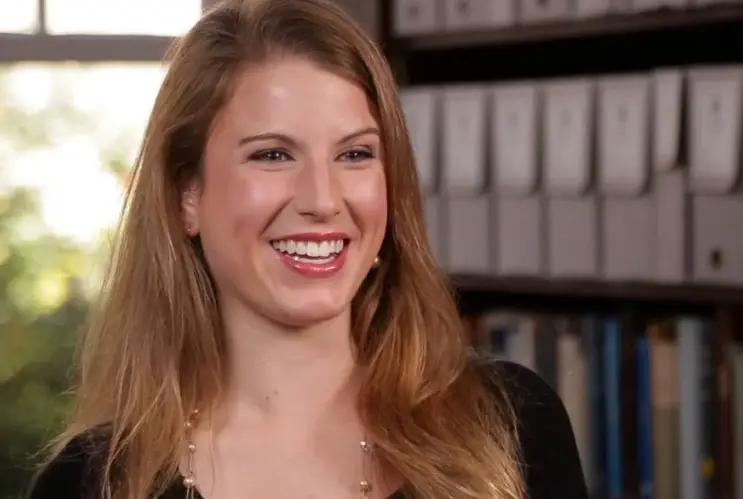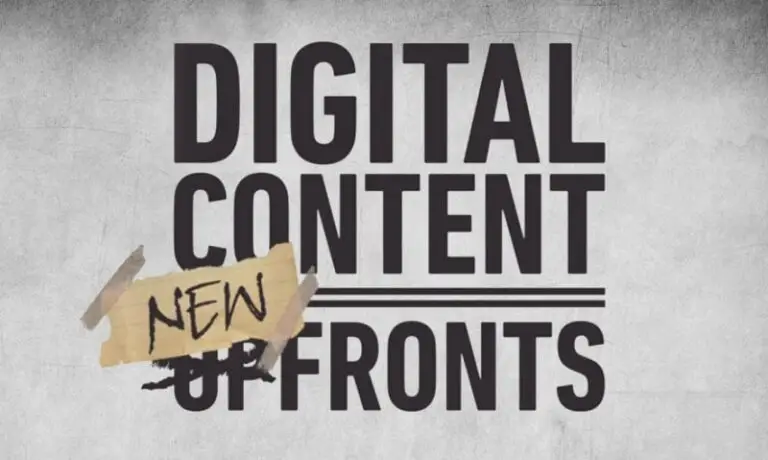How to conduct and capture and on-camera testimonial or case study interview
Capturing a compelling testimonial interview on video is more than setting up a camera and asking customers to talk about their experience. While it’s true that you have little control over how a customer feels and what words they will use to describe your product or service, it doesn’t mean you can’t use techniques that will guide the story in the right direction.
In this article, you’ll learn how to prepare better testimonial interview questions, how to conduct an interview to ensure you capture a complete story, and how to utilize professional interviewing techniques that extract authentic and powerful sound bites.
The techniques mentioned here assume that you are conducting and recording a video interview that will be edited. As you conduct your interview, you are looking for individual quotes that you or your editor can select, trim and arrange into an attention-holding story that unfolds logically with a beginning, middle and end.
Ask the right questions
After you have identified your subject and they agree to be interviewed, your ultimate goal is to get them share their unique perspective in a believable and memorable way. The best way to solidify a memory is through story.
The link between memory and stories is tightly woven. You can’t understand story without understanding memory. Our evolution has gifted us with some interesting memory quirks including our natural urge to preference a complete story over one where essential parts are missing. – The link between memory and stories – Shawn Callahan
How do you extract a powerful story from a customer? It starts by asking the right questions.
Prepare an outline of questions in advance of the interview that will yield a testimonial story complete with a beginning, middle and end. The elements of any story include character, setting, conflict, plot and ultimately a theme. Consider addressing these elements as you write and organize your question list.
- Character – Who is the subject? What is their background? What are their daily responsibilities? What are they passionate about? What is their goal?
- Setting – Where and it what way did the subject use the product or service? When did this take place? Was there a specific milestone or event that triggered a need for this product/service?
- Conflict – What specific problems did they have that your product or service solved? What worries or objections did they face when choosing to purchase or integrate the product or service? What obstacles were preventing them from buying? What alternatives were available?
- Plot: How did your subject find out this product or service? What was the process like using or integrating the product/service? What did they discover about it after purchase that surprised them? What is their most useful feature? How did it solve their challenges?
- Theme: How does their story align with the brand promise? How did their choice to use this product or service change their life for the better? Why would they recommend it to others? What advice can they give others who may be considering it?
You can use these elements to create a rough list of questions, then re-order them so that during the interview they will progress in the most natural way possible.
Keep your questions open-ended
Rather than asking a closed-ended questions like: “Did you enjoy your experience?”, ask open-ended questions like: “Why did you enjoy your experience?”. Open ended questions usually start with the word “How, Why or In what way? Based on the story elements above, make a list of open ended questions that will prompt in-depth and well explained responses.
The most important benefit of open-ended questions is that they allow you to find more than you anticipate: people may share motivations that you didn’t expect and mention behaviors and concerns that you knew nothing about. When you ask people to explain things to you, they often reveal surprising mental models, problem-solving strategies, hopes, fears, and much more. – Open-Ended vs. Closed-Ended Questions in User Research – Susan Farrell
Create a safe space
Make sure your subject is comfortable and familiar with the process. Thank them for taking time out of their day. Inform them that the interview will be edited, and that you will personally make sure they look and sound their best in the final video.
Because the video will be edited, let your subject know that they are free to make mistakes, restart a statement, cough, sneeze, scratch, or pause to think. Let them know they are free to break from the interview at any time to collect their thoughts, go to the restroom, or take a drink of water.
Make the space feel as private as possible. If possible, remove everyone but the interviewee from the subjects view, and politely ask anyone who is not critical to the filming process to step out of the room during the interview. You don’t want your subject to feel they are being judged or need to perform. The idea is to make sure they are comfortable and feel in control, so they will open up with powerful, personal and emotional stories.
Let it flow
You’ve prepared your list of interview questions and have a good idea of the kind of story you would like to get out of your subject. They are prepped, comfortable, and know that the interview will be edited. It’s time to start the conversation.
At the beginning of your interview, your subject will be hyper-aware of the cameras, lights, microphones, and cables snaking to and fro. They will probably be a bit nervous. It’s your job to engage and get them talking freely and openly. Ultimately, you want your subject to forget that there are cameras rolling. It’s best to begin with a few smalltalk questions to get them warmed up. Ask about something unrelated – Their dog, kids, a recent vacation – Anything that will get them telling stories.
Many inexperienced interviewers will deliver questions robotically and in perfect order, as if they are ticking them off of a list as the subject answers them. Even worse, some interviewers will hear an answer and respond with “That was a great answer, I like the way you said that”. This may seem like an encouraging thing to say to a nervous interviewee, but it immediately rips them out of the moment and reminds them that they are being recorded. It can hamper the flow of conversation. Can you imagine if you were at a dinner party and someone responded to your story with “That was great, I like the way you said that”. It’s just awkward. Have a conversation and listen actively.
Listen actively
Instead of trying to affirm or coach your subject through the interview, use active listening and nonverbal communication. Keep healthy eye contact, affirm that you understand with your face, and most importantly ask follow-up questions that prove you are listening attentively.
What seems like the simplest part of holding a conversation or conducting an interview is often the trickiest. It’s listening – the right way. Skilled interviewers become adept at listening not just to the words their subject is saying but also the tone in which the words are said, the pauses and nuances of the answer and what’s being left unsaid. This active, flexible listening lets them know when to move onto a new subject and when the moment is ripe to probe a little deeper with a follow-up question. Off-the-cuff questions often yield the best answers, but the opportunity only arises from deep, engaged listening. Take a lesson from Katie Couric and stay poised to change direction based on what happens in the conversation. – 6 Powerful Communication Tips From Some of the World’s Best Interviewers by Courtney Seiter
It’s perfectly ok to spend a bit of time with non-relevant follow-up questions. If your subject mentions in passing that they won an international ping-pong championship back in the 80’s, you should probably ask them more about it. Even if you don’t sell ping-pong paddles and it has nothing to do with the story you are looking for, good off-topic follow up question will prove you care about them as a person and set the precedent that “It’s ok to open up”.
Set the tone
As an interviewee, how you talk, listen and compose yourself will reflect in the interviewers face and speech. If you deliver questions in a formal tone, your subject will subconsciously answer in a formal tone. They will mirror your excitement, energy and demeanor throughout the interview.
If you want your subject to relax or smile more, don’t explicitly direct them to “relax and smile more”. It will not work and could potentially make them them feel even more self conscious on camera. Instead, you as the interviewer should relax and smile while you listen. Lead by example. Your subject will read your facial expressions and likely follow suit.
Don’t direct
In order to gather more “complete” soundbites, many interviewers will ask their subject to repeat the question in their answer. If they ask “What did you like most about this product”, they hope the subject responds with a answer like “The thing I like most about this product is…”
Although it can help in constructing a story in the editing room, this age-old interview request can be problematic if you are looking establish a relaxed and conversational tone. Some subject are good at remembering to repeat the question. Many are not. If your subject isn’t repeating the question in their answers after being prepped to do so, don’t push it too hard. Every time you remind them to repeat the question, you are once again reminding them that they are being recorded. This could quickly derail your conversation train.
A good editor can construct a testimonial story without having to fall back on these filler statements. In a pinch they can be useful in the editing room, but the constant exercise of repeating a question can start to make the answers feel canned and inauthentic. Nine times out of ten, editing out these restated questions keeps the story flowing without sacrificing clarity.
Stop talking
Rookie interviewers may feel pressured to “fill the air” when a moment of silence happens. If ask a question and your subject pauses for an unusually long time, resist the urge to rephrase the question or start coaching them. It might be that they are trying to find the right words, and a little patience could lead to a great payoff. If they need you to restate a question or provide clarity, they will usually ask for it. Otherwise, embrace the wait.
If you resist the temptation to respond too quickly to the answer, you’ll discover something almost magical. The other person will either expand on what he’s already said or he’ll go in a different direction. Either way, he’s expanding his response, and you get a clear view into his head and heart. – PBS Anchor Jim Lehrer on interviewing in Change-Friendly Leadership by Rodger Dean Duncan.
If your subject offers an answer to your question that is less than satisfactory, it might be that you should rephrase your question with a bit more simplicity. Depending on the circumstances, you might make a small note of the question and return to it at a later time in the interview to keep things moving.
Crave conflict
After you have covered your basics and feel you have captured a healthy amount of good sound bites, it’s time to hook the big fish. Put on your journalism hat and ask some tougher questions that put your subject in the position to defend the product or service. You are looking for stories that address real concerns potential customers may have.
So once you know your character’s desire, then look for the conflict that was blocking that desire. What was the problem that interfered with that desire that your product ultimately solved? At this stage, the greatest challenge is that by the time we’re sharing the character’s story, the conflict has been resolved. So as we talk to these characters (the people who use our product), and we start learning more about their experience, we see no conflict. – Produce Effective Video Testimonials with These Storytelling Principles by Patrick Moreau
Play Devil’s advocate. You know the weaknesses and common objections to your product, service or even industry as a whole. If these points were not addressed by your subject, bring them up and find out if any of these objections came into play in their decision making process. Your subject may have additional stories to share or points to make. Addressing these problems in the interview is a great way to capture sound bites with substance.
Open the floor
Before concluding the interview, ask your subject if there is anything you didn’t cover that they would like to add. This invites them to elaborate on a previous question or fill holes in the story. They may have nothing to add, but there is a chance they will offer up a slew of sensational soundbites that will make you glad you asked.
Circle back
After you have exhausted your question list, followed all the rabbit holes, played devil’s advocate, and opened the floor, you may want to circle back and ask some of your basic introductory questions one more time. By the end of the interview, your subject should be more relaxed and comfortable than they were at the start. You can gauge whether or not this is necessary, and you don’t need to conduct the entire interview over again. In any case, always be respectful of your subjects time and don’t beat a dead horse.
Be thankful
Your subject has taken time out of their day and opened up for your cameras. Let them know that you appreciate them and their time. Tell them when they might expect to see the final video, and how their participation in this interview will be invaluable in helping people like them make a good choice.







